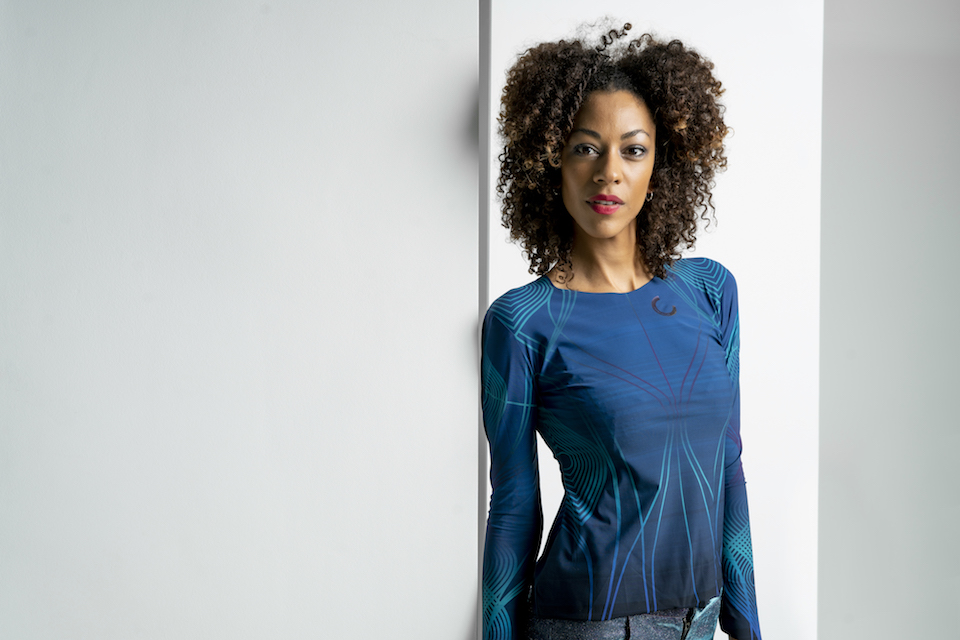CuteCircuit: clothing the wearer in immersive sound
A wearable technology firm supported by the Industrial Strategy Challenge Fund is creating an immersive experience that helps the user hear and feel sound.

CuteCircuit's co-founders, Francesca Rosella and Ryan Genz.
The UK’s creative industries – including fashion, design, architecture, film and television and music – are worth an estimated £100 billion to the economy, and account for more than 3 million jobs.
New technologies including virtual reality and augmented reality offer the UK’s creative industries opportunities to develop new immersive experiences, keeping them ahead of the global competition.
CuteCircuit, a London-based interactive fashion company, is using £42,000 from the Industrial Strategy Challenge Fund’s Audience of the Future challenge to create a new immersive experience combining sound and touch.
Ryan Genz, co-founder of CuteCircuit, said:
We are combining a 3D audio interface with a technology we are very well known for called the sound shirt, which allows people to feel musical sensations. Putting the two together, we create an augmented reality landscape that has both 3D audio and sensations.
The sound shirt aims to allow the wearer to essentially feel music on their skin, and likens the experience to seeing a live concert.
The sound shirt was demonstrated for people with hearing impairments at the Access+Ability exhibition at this year’s World Economic Forum in Switzerland.

A model wears CuteCircuit's Sound Shirt.
Design and technology
Ryan added:
It’s a product that we think has many ways to market. A user at home wearing it and watching an opera could have the sensation of being in the opera hall.
Design and technology should almost always go hand in hand. Most companies don’t work that way, but it’s how we like to work and it’s a fun way to work. If you have the technical knowledge to realise the design, it means you can create things that are a little different to what’s already in the marketplace.

Detail of CuteCircuit's wearable technology.
Made to be worn
Co-founder Francesca Rosella added:
Our garments are lightweight and thin and there are no wires inside. That’s what’s special. There are no harmful chemicals or metals. It’s all powered by a small, rechargeable, low-voltage battery.
We see our technology being used by people with hearing or sight impairments but also more widely, for example in video games or during museum visits, giving the user a completely immersive experience.
The founders met while undertaking a graduate programme at Italy’s Interaction Design Institute Ivrea in 2001, which combined technology and design, and CuteCircuit currently employs 5 people.
Now, the firm has several patents for integrating the micro-electronics and conductive fabrics that make up its clothing. CuteCircuit’s wearable technology has been worn by Katy Perry and Nicole Scherzinger. It has also worked with Chanel on illuminated interactive handbags and with Converse to create footwear with a built-in pedal for guitarists.

Francesca Rosella, co-founder of CuteCircuit.
Exploiting immersive experiences
The Audience of the Future challenge is a £33 million fund that brings together creative businesses and researchers to explore new immersive technologies and create new experiences that captivate the public.
It includes £1 million to support projects taking a ‘human-centred’ approach to design in order to produce products based on genuine user needs.
The funding has allowed CuteCircuit to create a prototype product and look at what the market might be for it. It is now investigating future investment to help it take a full product to market.
Francesca added:
Augmented and virtual reality is a multi-billion-dollar market, and we have a key technology patent for that market.

A model wears another of CuteCircuit's garments.
Updates to this page
-
Removed image.
-
First published.